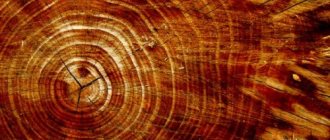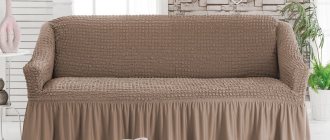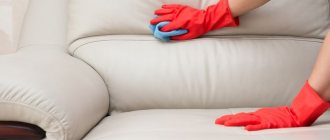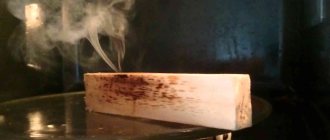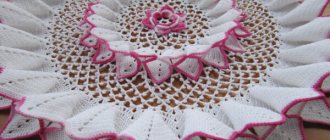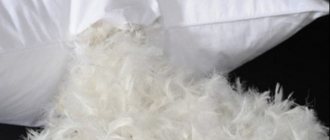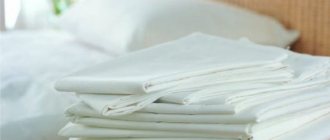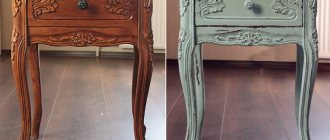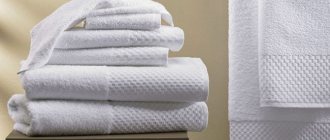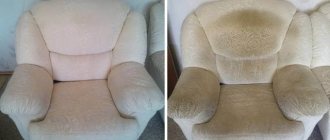Wood is one of the most popular materials for construction. To obtain high-quality and durable buildings, the wood must have a certain degree of moisture. Drying it at woodworking enterprises is carried out using special equipment. But at home, this process is impossible, but drying will only be possible if certain rules and conditions are met.
Drying lumber at home
Materials and tools
For high-quality drying of wood at home, it is arranged under a canopy in a well-ventilated place. Under the influence of atmospheric phenomena, moisture evaporates, and the remainder, which is equal to the humidity of the environment, is distributed evenly throughout the structure.
But this material cannot be called fully dried. Usually the percentage of moisture is higher than permissible because it does not fall below the air humidity. This is especially noticeable in regions with high humidity levels - for example, coastal regions.
For high-quality drying of lumber you will need:
- iron sheets, roofing felt;
- paper;
- beams, pipes;
- glue, paint;
- polyethylene film.
The main disadvantages of self-drying:
- duration in time;
- risk of wood warping;
- the difficulty of bringing humidity levels to 6 - 8%.
Homemade drying chamber
Industrial versions of drying chambers are very expensive, so carpenters often make homemade chambers, which, firstly, are easy to install, and secondly, drying them yourself gives confidence in the quality of the material.
An example of a homemade drying chamber was taken from the YouTube channel stolyar te.
A separate room will be equipped for the drying chamber.
Extension for a homemade drying chamber
This dryer is designed for 3.5 m3 of lumber. This is the optimal and affordable volume of wood for a home workshop. The wood is dried separately by species: ash, oak, cherry, maple.
Drying chamber loaded with boards
The frame of the dryer is welded from a corner, then the boards are fixed and the profile sheets are screwed with metal screws. The design has two doors for convenient loading of lumber. The walls of the drying chamber are covered with two layers of mineral wool, then a hydro-vapor barrier and another layer of mineral wool with foil. This coating breaks easily, but holds the temperature well in winter and summer.
Inside the dryer, the boards are laid in one level through identical crossbars.
Boards laid across crossbars
Two fans with motors up to 0.9 kW are installed in the upper part of the chamber. Their power is enough to blow hot air over a stack of 3.5 m3.
Fan for blowing
Along the wall there is a metal gander with holes that increase into the depth of the chamber. Hot air from the stove is driven through the gander.
Gander with holes
A humidity sensor is placed next to the fan.
Placement of the humidity sensor
A homemade boiler is made of 4 mm steel. It is three-circuit and has two inputs and two outputs.
Boiler for drying chamber
To blow air through the boiler, a double-circuit motor is installed on the wall.
Dual circuit motor
One pipe from the double-circuit pump goes down the boiler. The air flow goes outside through a six-meter coil inside the boiler, and then through a gander with holes is distributed inside the chamber over a stack of boards.
Formation of air flow in the gander
The second pipe from the double-circuit pump goes into the upper part of the boiler. Heated air is supplied through the corrugation to the wall inside the chamber.
Formation of air flow in the corrugation
Moisture collected after drying lumber must be removed from the drying chamber. For this purpose, two bathroom fans are installed, operating for exhaust.
Exhaust fan
The fans turn on automatically from a special humidity sensor. It is set to the desired humidity level.
After starting the drying chamber, on the first and second days there is a maximum release of moisture from the wood. The circulating hot air becomes humid and is drawn out through the fan. Instead, dry air comes from the boiler.
The drying process takes place at 50-55 degrees. For control, two indicators of temperature sensors are displayed.
Temperature sensor indicator
They use 2 sensors, since 2 fans are running. The readings on the sensor indicators should be the same. If one fan stops, this will be reflected in the indicator. The temperature inside the dryer is kept constant.
To dry a 30 mm board, 12 days are enough. If you dry a 50 mm board, it will take 14 days.
The ends of the lumber are painted over during drying to prevent cracks. 6-7 cm of useful material is lost on cracks.
Cracks at the ends of dry boards
The dried board is kept for up to two months to stabilize. The drying process is dependent on the weather. In hot and cold weather, the air is dry and the board dries quickly. In rainy weather, drying of lumber slows down.
Video about a homemade drying chamber:
Choosing dry wood for carpentry is the key to long service life of the finished product. Every carpenter should not ignore this important technological process.
Using materials from YouTube channels: Carpentry, Koval's Strokes, mtmwood, stolyar te.
More articles from the Technology section:
Category Useful tips
Join groups and Odnoklassniki
Wood drying methods
There are many ways to dry wood. Their task is the same - to obtain reliable wood, the properties of which will be significantly improved. On average, the drying time for lumber under natural conditions ranges from a week to several months, and under artificial conditions from a couple of hours to several days.
Old ways
The oldest method of drying is evaporation. They have been used since ancient times. The wood was placed in a container with water at a temperature of 70 degrees, sawdust was poured on top, and so the material was steamed. As a result, the material did not crack and became dense and flexible.
Another long-standing method is waxing. The wood was dipped into liquid paraffin and left for several hours. After this treatment, the wood did not warp and became a rich dark shade. Paraffinization was more often used for wood to make tableware. Such products lend themselves well to painting and accept varnish. They also became stronger, and cracks never formed on them.
Natural drying
Quality wood is not easy to obtain in a short time frame. Natural drying is often the solution. If the tree is a block of bark, then it should not be removed by making cuts across the trunk.
Even when sanded, wood such as birch, alder, aspen and linden dries without cracks, so for safety it is better to cover the ends with resin or oil.
Natural drying is carried out in a ventilated and dry room. If you do this under the sun, only the outer layers will heat up, while the inside will remain wet, provoking the appearance of multiple defects later.
The workpieces are laid out on stands no less than 60 cm in height, with gaps left between them.
The natural drying period is 2 – 3 years. Such a long time is one of the disadvantages. The advantages include the simplicity of the process and the absence of the need for large financial investments.
Chamber drying
If the goal is an excellent result and there are means to achieve it, you can pay attention to chamber drying. It is characterized by highly effective results, allows you to monitor the process and obtain wood at the required moisture content. It is carried out only in specialized enterprises under the influence of a gaseous environment. Moisture evaporates. Modes may change.
Drying in a special chamber
Drying chambers are special metal devices equipped with aerodynamic heating. When drying, low pressure steam enters them. The cost of the process is high due to energy costs.
Rotary drying
It is based on the use of centrifugal force. Lumber is stacked on a platform located inside a well-heated room. Centrifugal force forces moisture to move to the ends and outer surface of the workpieces.
The active movement of hot air helps to dry the wood evenly in the shortest possible time. To obtain heat, special lamps and stoves are used. Infrared radiation spreads quickly and penetrates 12 mm into the wood. As a result, conifers up to 25 mm thick can be dried in a few minutes - this is several times faster than chamber drying.
Contact drying
In another way, such drying is called conductive. It is carried out using heat transfer from a heated surface. The method is well suited for thin materials - veneer or plywood. The sheets are fixed with a press between heated plates.
Contact drying
Atmospheric drying
The most common method of drying due to minimal cost is atmospheric. Its implementation does not require the use of additional resources; it can also be easily organized independently.
The productivity of the process depends on the environmental humidity in the area, the season and air temperature. Also, drying will require quite a lot of space and compliance with the following rules:
- arrangement of a shed or shed with through ventilation;
- laying boards in rows at intervals;
- laying weights on top to prevent warping.
If air humidity is low, then you can get material with 12 - 48% humidity. It is allowed to finish drying the lumber in a heavily heated room.
Drying in liquid
Used as an additional measure before applying impregnation with oil-based antiseptics. Solutions of mineral salts, paraffin, sulfur, and molten metal are used as liquids.
Drying in special liquids
The drying time depends on the intensity of heat redistribution and the power of the heat exchanger in the drying chamber. The tree is immersed in liquid, which is brought to a boil. A constant temperature is maintained until free moisture is completely removed. The approximate duration of the process is from 3 to 20 hours.
Know-how - preparation using infrared light
Oak lumber after infrared exposure has the following characteristics:
- Has a specified humidity.
- The fibers do not deform, so there is no internal stress or microcracks.
- Externally, oak remains natural (color and shape do not change), as during atmospheric drying.
The rules for using an infrared battery are simple and the operator does not need to have any skills or experience. The battery is connected to a simple single-phase outlet and current consumption is minimal. To dry 1 cube of oak you will need 200–350 kW.
Humidity is checked during infrared exposure with a hand-held moisture meter. As soon as the indicators meet the set objectives, the dryer turns off. Immediately after the process, the dried lumber can be used in work. The process is shown in more detail in the video:
Since oak is capricious and does not react well to temperature changes, the optimal drying methods are natural or infrared. They are suitable for home use and do not require any special preparation. In large industries, chamber drying or vacuum preservation is used. Which significantly reduces time and extends shelf life.
Air drying wood
To dry wood in the fresh air, you must first install a flooring and install a canopy over it to protect the wood from the sun and precipitation.
Wood is placed on the flooring: there is no need to remove the bark from the needles to prevent the formation of cracks.
The ends are treated with table salt, liquid glue, and lime - this will protect them from rot. The wood will take a long time to dry depending on climatic conditions and the thickness of the boards. The approximate drying time for coniferous and soft deciduous trees is from 1 to 1.5 years, for hard deciduous trees - more than 2 years.
Features of dried timber
The timber must be dried, otherwise its reliability is highly questionable due to moisture.
It is clear that first moisture from the outer layers evaporates intensively. This is what creates a lot of stress in the wood: stretching of the surface and the appearance of cracks.
Types of timber
Experts clarify how to dry timber with different shrinkage coefficients:
- low-drying - pine, spruce, fir, white poplar, cedar;
- medium-drying - beech, oak, aspen, elm, black poplar, ash, small-leaved linden;
- highly drying - hornbeam, Norway maple, birch, larch.
The percentage of moisture in the profile beam = the mass of water in the wood/the mass of dry wood.
Properties of dried lumber
Let's summarize the goals of drying timber:
- increase the safety of the material;
- enhance strength properties;
- avoid the appearance of cracks;
- strengthen connections;
- simplify construction work;
- increase insulating abilities;
- protect the wood by painting immediately after installation;
- reduce inevitable changes to the finished building;
- improve the surface without additional cladding.
Drying boards on a cement floor
The properties of concrete include the ability to absorb moisture. This is the basis for drying lumber on a cement floor.
Raw boards are laid on a cement floor; it must be checked for dryness and cleanliness. During the day, the wood is turned over so that the planes rest against the concrete in turn. This method allows you to dry the wood to 25%. The room must be ventilated; there is no need to install heating devices in it. When metal is placed nearby, the wood darkens.
What is needed for the process
To obtain high-quality products, be sure to use well-dried material. Raw wood does not sand well; paint and varnish quickly become cracked. Drying boards is an important stage in the preparation of lumber.
There are several options for naturally drying wood with your own hands. The methods describe how to properly dry the boards to rid the wood of excess moisture. In addition to lumber, you also need to have auxiliary means:
- roofing felt;
- tin;
- bars;
- paper;
- film;
- dye.
How to dry boards quickly
If you urgently need to dry the boards, you can use one ancient method, which is still considered relevant. The board is wrapped in paper in 5 - 15 layers, then in cellophane, in which holes are made.
The board prepared using the described method is placed on a warm radiator or window sill. The paper absorbs moisture intensively, but it should be replaced with a new one once a day. Also, the board must be constantly turned over. If the width is more than 3 cm, the drying time will take no longer than 4 days. When the thickness is greater, it will take more time, but still faster in comparison with other methods available for independent implementation.
The disadvantage of this method is the high probability of wood warping. But warping can be easily eliminated with a plane.
Requirements for wood used for insulation (and not only) of a house
Here are the requirements for wood: good quality. This means: you need lumber with a small number of knots, without falling knots, without rot, smooth, dried. But where can I get one?
It’s unlikely that you’ll be able (or want) to look through every single piece of wood in a stack at a timber trading base in search of the perfect ones. Especially if you need not 1, 2, 5... pieces, but five or six cubic meters. Therefore, most likely, having looked around the burning rows of stacks, you will simply point at one of them, deciding for some reason that the boards in it are more or less normal. Like, load me with this.
You can, of course, buy wood that has been dried in a factory, impregnated with fire retardants and other protective compounds, smooth, planed, and calibrated. True, it will cost at least 2.5 times more. Can everyone afford it, and are there such factories everywhere?
In fact, you can do everything yourself and get a satisfactory (or satisfying?) result. This method of drying lumber was not invented by me, but I read it once on some forum or website, applied it and was very pleased. And I recommend it to you.
The only drawback of this method of drying boards is that it is somewhat labor intensive, but the result is worth it.
So…
Drying freshly purchased lumber
Many people, when purchasing expensive wood, treat it carelessly. Due to this, over time it rots and becomes unusable. Freshly purchased boards quickly darken if not properly dried. In fact, removing excess moisture is not at all difficult - the method of drying in the open air is quite suitable here. This way, the boards will retain excellent quality, but the process may take a year or longer.
Blackness of fresh wood without drying
Wood construction needs to be planned in advance to avoid unforeseen situations during work. Damp wood is always a problem and often leads to the need to redo the final result.
Choosing a tree
Before starting work on laying floorboards, you need to take care of choosing suitable wood. Moreover, it should not only be attractive in appearance and suitable for the price, but also meet the necessary operational requirements.
These requirements include:
- expected load;
- the purpose and characteristics of the room in which the flooring is planned;
- temperature and humidity conditions of the room.
For small rooms, it is preferable to choose coniferous wood: spruce, pine, cedar, fir or larch. Conifers have high strength and wear resistance, and these qualities are successfully combined with an affordable price.
Excellent flooring is also made from oak, aspen and alder wood. Oak is very popular due to its resistance to all kinds of negative influences. Alder and aspen captivate with their eye-pleasing shades and beautiful texture. Mahogany wood floors look great, but due to their high cost, they are used mainly for decorating luxury rooms.
It doesn’t matter whether the floorboard is purchased or prepared independently, the most important condition for putting it into operation is proper drying.
